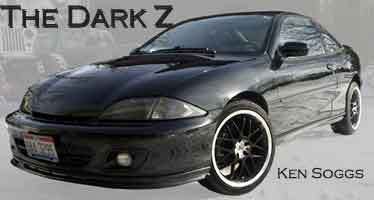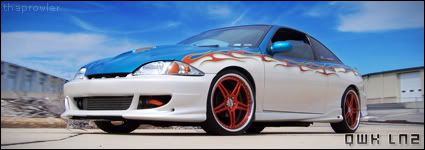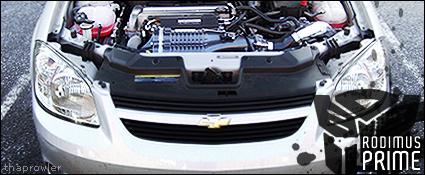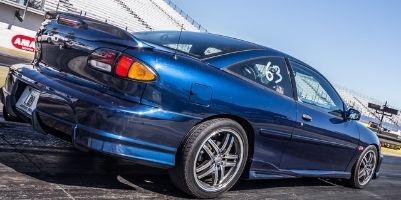Rodimus Prime wrote:might want to try setting up a histogram and monitoring the rpm/load range that the knock is occurring in and see if its the same place every time or all over, if its the same place id say to trim back the spark advance a few degrees, if all over the map it might be more of a false knock issue or a potentially much much bigger problem
I don't get the impression that this guy has any kind of tuning software to use or log with, so no HPTuner histograms possible for him.
Timothy Pietraallo wrote:Not all abnormal combustion creates knock. Even some pcms ignore knock especially at like idle. The piezoelectric element in the sensor picks up the pressure or vibrations that generates a voltage which is then sent to the pcm, which causes the dummy light to turn on.
Specifically, knock is caused by a second combustion event starting after the spark ignition happens. The second combustion event happens because the charge/chamber is hot enough to spontaneously ignite the fuel/air when the spark ignition causes the chamber pressure to rise. At this point, there are two specific fires burning and growing towards each other, one originating and travelling outward from the spark plug and a second that started elsewhere (usually the edge of a piston near the ring lands) and travelling towards the plug. When these two flame fronts collide the combined speed is faster than the speed of sound. Therefore, it creates an actual sonic boom in the chamber. This sonic boom is the "hammer hit" sound you hear during spark knock. The sonic boom creates damage causing pressure waves in the chamber.
The knock sensor is indeed a piezoelectric element. A piezoelectric element is a ceramic substance that generates a voltage when pressure is applied or removed from it. All sound is a pressure wave and the element in the sensor generates voltages that are proportional to sounds and intensity levels it "hears".
These voltages, all of them, are sent directly to a J-body's PCM where any that cannot be knock are filtered out.
Depending on the capabilities of the PCM, some additional filtering is based on intensity and duration and some filtering is influenced by other sensor data, i.e. load, temp, rpm.
Some of the newest PCMs get real particular, ignoring times when load is not enough to truly generate knock, or when rpm is outside the usual range to be capable of knock, i.e. high RPM because there simply isn't enough time to generate any real damaging pressures because the piston is dropping faster than the pressure can build. The newest PCMs can even look for knock at very specific crankshaft indexes because they know that knock cannot happen before the spark is fired (ignition timing degrees) nor can it happen beyond a certain # of degrees after the spark has happened, too.
If the PCM finally concludes that it is seeing knock, all the PCM does is internally save the appropriate timing correction value into its memory for use in its next calculation.
So now we get to the aptly named dummy light. Where exactly does this get connected? As I stated before, simply connecting it to a sensor's leads does not result in a correct-for-that-engine reaction. The universal aftermarket device will not be tuned to the engine's specific tone. It will show reponses to noise other than real engine knock. And yet again, even if it did correct trigger itself off real knock, how could it know the PCM's response if it even responded at all?
The device cannot be connected to another lead(s) at the PCM to read knock retard because NO OEM PCM has ever had a Knock Retard output. There is no driver that can control any light to indicate knock or, more specifically, knock retard.
The only exception to that is 1980's GM V6s and V8s that had an external knock sensor controller. These vehicles had an engine-specific external module that read and filtered the knock sensor signal then sent a signal to the PCM to tell it when there is knock. A light driven by this signal output could accurately show the presence of knock, but it could still never show what the PCM's response was in terms of knock retard.
Back on the J-body track, there is entirely no way a unit could ever be connected to the ICM to read knock or knock retard because it isn't connected in any way to the system. The ICM simply acts as an amplifier for the PCM's ignition output.
The only way a device could even act like it was reading a knock retard value by splicing into the ICM to PCM wiring is if it was measuring changes to timing and triggering when it perceived a negative change of a specific amount or more. This cannot be relied on at all because PCM timing is always changing +, -, and very significantly. If a device saw a change that it though could be caused by knock retard, it would have no way of knowing if it really was. Just openning the throttle fast can cause a 20° drop in advance and its not knock related and definitely totally normal.
SO what I'm saying is that this guy's data is suspect. He says he has "alot of knock retard" but what he really has is a lot of probably inaccurate data that will make him chase a ghost of a nonexistant problem.
The thing that can accurately read and show whats going on, if anything at all, is a scan tool of some type (a tuner tool is scanning just the same). Once we have real data from that, then we can try and solve a real issue.
Taetsch Z-24 wrote: (oh, and Protomec, on a personal note, the Vid that Brian sent me of the GT40. what power did ya end up with , the ITB's { or where thay carbs?} looked bad ass.)
its an ITB, fuel injected, NA, small block ford and it made 558 fully-streetable whp when I was done.
Edited 1 time(s). Last edited Thursday, March 06, 2008 3:56 PM
sig not found











